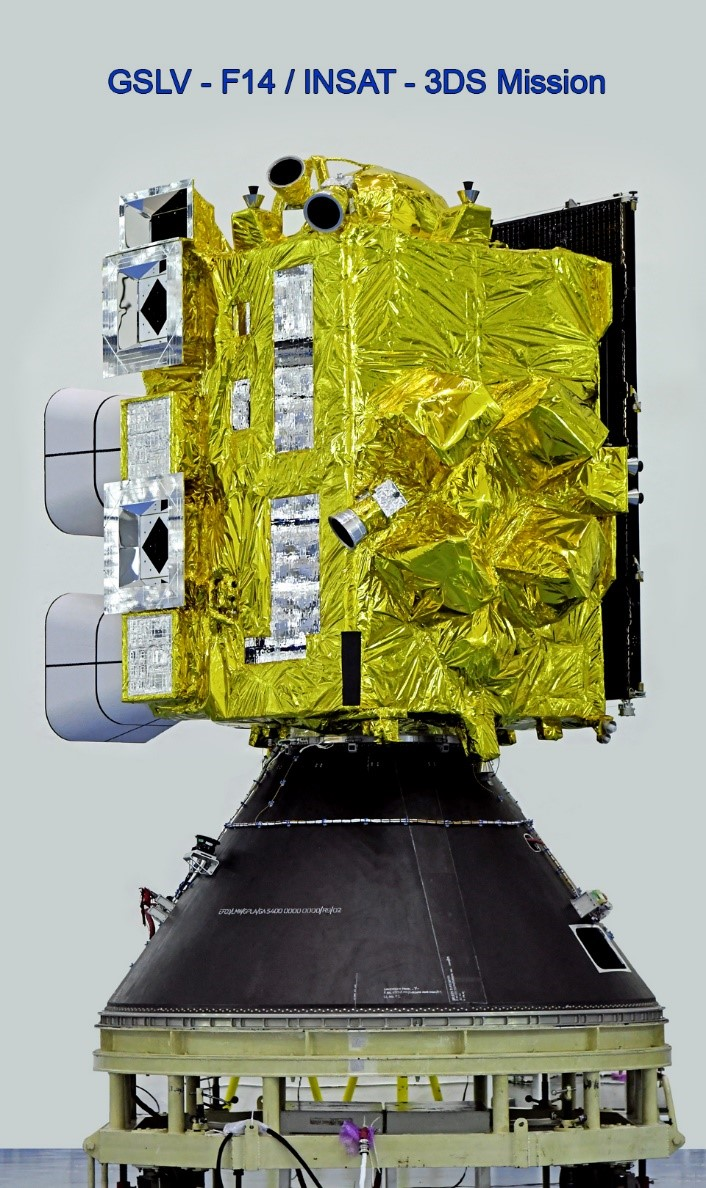Important Facts For Prelims
GSLV-F14/INSAT-3DS Mission
- 17 Feb 2024
- 3 min read
Why in News?
The Indian Space and Research Organisation (ISRO) is all set to launch its GSLV-F14/INSAT-3DS mission on 17th February 2024, with the aim of enhancing weather forecasting and disaster warning capabilities.
What are the Key Highlights of the GSLV-F14/INSAT-3DS Mission?
- INSAT-3DS will be launched aboard the Geosynchronous Satellite Launch Vehicle F14 (GSLV F14).
- GSLV-F14 is a three-stage launch vehicle.
- The first stage (GS1) has a solid propellant motor and four earth-storable propellant stages(EPS).
- EPS includes a supporting structure, propellant tanks, and an engine.
- The second stage (GS2) is also an earth-storable propellant stage
- The third stage (GS3) is a cryogenic stage, with propellant loading of liquid oxygen (LOX) and liquid hydrogen (LH2).
- The GSLV-F14 is the 16th flight of the GSLV, and the 10th flight with the indigenous cryo stage.
- The first stage (GS1) has a solid propellant motor and four earth-storable propellant stages(EPS).
- GSLV-F14 is a three-stage launch vehicle.
- INSAT-3DS comprises four payloads, including an Imager, a sounder, a data relay transponder, and a satellite-aided search and rescue transponder.
- Imager Payload:
- INSAT-3DS carries a multi-spectral Imager capable of generating Earth images in six wavelength bands.
- Sounder Payload:
- It features a 19-channel Sounder payload, offering data on atmospheric vertical profiles like temperature and humidity.
- Data Relay Transponder (DRT):
- INSAT-3DS through DRT receives global meteorological, hydrological, and oceanographic data from automatic weather stations and data collection platforms, relaying it back to user terminals.
- Satellite aided Search and Rescue (SA&SR) Transponder:
- INSAT-3DS through SA&SR relays distress signals for global search and rescue operations, covering the Ultra high frequency band.
- Imager Payload:
- INSAT-3DS is designed to enhance meteorological observations, aid in weather forecasting, and improve disaster warning capabilities.
- Fully funded by the Ministry of Earth Sciences (MoES), it follows the lineage of Third Generation Meteorological Satellites from Geostationary Orbit.
- The satellite will monitor land and ocean surfaces, augmenting the services provided by existing INSAT-3D and INSAT-3DR satellites.
- India gets weather updates through INSAT-3D & 3DR weather satellites. INSAT 3DR was launched in 2016 as a follow up on INSAT-3D which was launched in 2013.
- It will significantly contribute to India's weather agencies, facilitating more accurate weather forecasts and better disaster management strategies.
- It will facilitate data collection and dissemination capabilities from the data collection platforms.
- INSAT-3DS will provide satellite-aided search and rescue services, enhancing emergency response capabilities.







